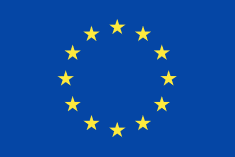Overview of existing product classification for T/C/F
Product classification is critical to the functioning of any industry in the knowledge based market of today. In the e-business context, product classification is the basis to design electronic catalogues.
A harmonised product classification will help buyers to easily find the products listed in these catalogues, to order and purchase them. It will help all the trading partners to
create and maintain quality relationships. A standardised classification structure will help manufacturers to easily classify their products.
The objective of eBiz-TCF has been to provide trading partners a common description being accessible by all parties involved in the value chain. It serves the industry and retailers in their electronic business transactions and facilitate electronic procurement. It ensures visibility to European niche products on the international scene. It is a key to a more open market and increase the competitiveness on the world stage.
Different product classifications do exist for TCF sector, all with different structures, history and use.
Overview of the product classifications for TCF without being complete:
-
Dialog Textil – Bekleiding (DTB) a German group of companies who joined forces for the TC sector. The product classification can be found on their website http://www.dialog-dtb.de if you are a member. A version of 2002 can be found on http://www.pranke.com/en/services/wwsprofil/index.htm (click on product groups). A more recent version is available by clicking on DTB product classification
- GS1 developed product classification schemes for different sectors, including textile and footwear. The Global Data Synchronisation Network (GDSN) is a cornerstone of electronic business practice and is used by more than 5000 retailers and suppliers. The Global Product Classification (GPC) is the chosen classification system for GDSN. Sellers and buyers need to group products the same way globally to ensure effective data synchronization in the GDSN and to enable product search. In addition it can be cross-referenced to existing other proprietary trading partners classification systems. GPC linked to GTINs (the Global Trade Identification Numbers are the most worldwide spread identification of consumer good products) enables huge use of POS (Point Of Sale) data consolidation. An overview of GPC for all sectors including clothing and footwear, is available at http://gpcbrowser.gs1.org/.
- EAS has been developed by a number of German buying groups and is used in some countries (german system) for footwear.
- FEDAS, the umbrella association of the European sports goods manufacturers’ associations, has been working on a giant task for several years: in the electronic data exchange within the sports goods sector. It wants to ensure, for instance, that all computers interlinked with each other will know what ski can be found for what sort of activity in the shelves of the specialist outlets. To accomplish this task the association created the FEDAS Product Classification Key together with experts from the brand-name industry and the big trade corporations. This code has been available in the Internet at http://www.fedas.com since 2000. On October 1, 2002 the updated version 2.0 of the code was launched on the web. The FEDAS Product Classification Key is an essential prerequisite for a smooth and precise data exchange between the trade and the industry. It is indispensable to have order data featured in electronic catalogues. Amongst other things this data includes the EAN article code, which is an identification code for all goods on SKU level – Stock Keeping Unit – alongside a currency code, a country code and supplier codes (Incoterms).
- eCat project of CEN. Interoperability of catalogues and harmonization of product classification systems is a key issues for industry for reaping the full benefits from eBusiness. Multilingualism in the European Union is often seen as an obstacle for the European economy in terms of competition and of the opening up of new markets, but is has also political dimensions relating to consumer protection, freedom to move, etc. Products and services are sold in the language of the target market. eCommerce and eBusiness can function well, only if the virtual and all their major elements (product classification schemes, user interfaces, product catalogues, etc.) are multilingual from the outset. This would create insurmontable financial barriers for SMEs. Workshop eCAT1 was set up in 2002 by CEN with the support of the European Commission, Enterprise and Industry Directorate General, to address these concerns.
Matching with the requirements
Connecting companies electronically between each other can only be achieved if the data required within the industry are gathered once at one source and then are transmitted between the IT systems directly. For example, in order to transmit article data it is important that one can depend on industry standards. In this way, additional internal work to translate external data into internal formats (manually or with conversion tables) can be avoided.
Only with the help of an efficient product classification, companies will be able to enjoy the enclosed benefits as:
-
a uniform and unique product classification avoids additional internal processing to translate external data into internal formats (manually or with conversion tables);
-
product classification supports buing programmes by allowing buyers to pre-select groups, product groups and of applicable products;
-
a common language for category management thus speeding up the ability to react to consumer needs;
-
elimination of redundant activities and improvement of data integrity and accuracy of product set-up, maintenance and catalogues;
-
being cross-referenced to existing proprietary trading partner classification systems;
-
enabling potential use of POS data consolidation.
The classifications systems for both sectors can be reviewed and modifications proposed but all proposals will take into the need for a common system to inter-operate with existing local classification systems and the particular needs of the sectors which require different levels of categorisation and flexibility in order to allow niche productions as well as seasonal product innovations.
Downstream Standards
Standards for identification
For identification the standards of GS1 will be used only. These are
- GLN (global location number) for parties and locations
- GTIN (global trade item number) for articles, represented by
- EAN (European article number)
- UPC (universal product code)
- SSCC (serial shipping container code) for packages
A retailer needs a GLN for headquarter, every branch and all locations involved either in the logistics or the financial process. For a single store retailer all this is the same which results in one GLN.
In more complex business organizations GLN for shop-in-shop areas might be useful.
The producer needs separate identifications for special business models. Especially if charge-by-delivery and consignment models are used with the same customer, different identifications should identify the processes as different logical suppliers.
Note that, regarding the pilots in the framework of eBIZ-TCF, because some pilot partners are not able to implement the identifications in due time (and the other partners of the small pilot group are able to process the communication without it), it will be acceptable to implement without the appropriate identifications for the first step. Anyhow, for compliance with the architecture it will be enough to have the statement that those companies will implement before they will start to broaden their communication towards other partners.
Standards for classification
The article classification is important as a tool to support the automated inserting of article data at the retailer’s side.
For product group classification the GPC is globally proposed by GS1.
Other regional/national classifications have a regional use, like, in Germany, EAS for footwear, DTB product groups for textile/clothing and FEDAS for sports. They are the most widespread standards for product group classifications.
For color and article class it is recommended to use the definitions from the WWS profile.
Concerning size there is no transnational running standard but there is the CEN workgroup WG10 TC248 draft specifications (pr EN13402-4, [13]) for the "Size designation of clothes -Codying system" that still is a draft not implemented.
Because of this the producer should use his national size schema and the retailer will assign the local codes by a lookup table.
RMS providers should build their article inserting process in a way, that these classifications, together with GTIN and three level identification of article number, color code and size code, are sufficient for the task.
Good practices: the use of DTB product groups for TC sector
Why do we use of DTB product groups ?
There are two main reasons for the use of the DTB product groups. The first is saving efforts compared to the use of individual groups. The second and even more important reason is to have the necessary deepness in classification to map it to the own product groups in the process of automated insert of the article information.
The first reason is saving efforts. It is possible to map the specifications of each supplier individually but this means a lot of work. From this knowledge we looked for a standard some years ago. While for the internal use inside a retail company a lot of reasons may influence the decision in a special way, the decision for an inter-company standard has only one criteria, the level of definition has to be deep enough. At the time the decision was taken the DTB specification fulfilled this condition best. By now more than a hundred producers are using the DTB product groups which is an important argument because that also means that nearly all retailers using EDI have a mapping table from DTB to own groups. In consequence there is no additional effort for a new supplier if it is using the DTB specifications.
The second reason is the necessary level of detail in the specification. The DTB product groups are a six digit number which consists of five levels.
-
Digit 1: main area (for example: clothing)
-
Digit 2: area, (for example: men)
-
Digit 3-4: main group, (for example: jacket)
-
Digit 5: group, (for example: indoor)
-
Digit 6: sub group, (for example: jeans)
To be of real use the specification has to be used at least down to group level better to sub group level. On a higher level the information is useless because the retailer is not able to map to his own groups in a unique way and the goal of automated creation of the article data set is missed.
|
![[PRECEDENTE]](/ebiz/images/but_previous.gif)
![[INDICE]](/ebiz/images/but_up.gif)
![[SUCCESSIVA]](/ebiz/images/but_next.gif)
![[PRINT]](/ebiz/images/but_print.gif)
![[PRECEDENTE]](/ebiz/images/but_previous.gif)
![[INDICE]](/ebiz/images/but_up.gif)
![[SUCCESSIVA]](/ebiz/images/but_next.gif)
![[PRINT]](/ebiz/images/but_print.gif)







